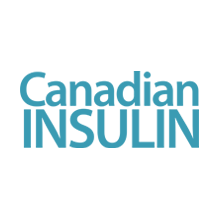Key Takeaways
- High readings need context: symptoms, timing, and ketones.
- Use individualized targets set by your clinician.
- Know danger signs that require urgent evaluation.
- Follow a clear, pre-agreed action plan.
Clinicians individualize insulin decisions, but understanding what blood sugar level requires insulin helps you respond sooner and more safely. The guidance below summarizes thresholds, context, and actions you can discuss with your care team.
What Blood Sugar Level Requires Insulin
Insulin may be indicated for sustained hyperglycemia (high blood sugar) that does not respond to non-insulin measures, especially when symptoms or ketones are present. In type 1 diabetes, rapid-acting insulin is typically used for meals and corrections. In type 2 diabetes, insulin is considered when oral agents and lifestyle changes no longer achieve targets, or during acute illness, surgery, or pregnancy. Your clinician will tailor thresholds to your age, comorbidities, and hypoglycemia risk.
Context matters. Fasting versus post-meal values, trend direction, and recent activity all influence the plan. Many teams create a written correction schedule and sick-day rules to guide safe, consistent decisions. For broader management basics in adults, the curated Type 2 Diabetes articles provide practical background you can review alongside your care plan.
Interpreting Ranges: Fasting, Post-Meal, and A1C
Typical clinic targets use both clinical terms and plain language. Fasting or pre-meal goals are often lower than post-meal peaks. Many adults aim for fasting levels near normal, with two-hour post-meal values that stay below individualized thresholds to reduce long-term risk. Targets vary with age, pregnancy status, kidney disease, and hypoglycemia history.
People living with type 2 often ask about type 2 diabetes blood sugar levels in practical terms. Discuss specific meter goals, pre-meal and two-hour post-meal ranges, and how these align with your A1C targets. Remember that A1C reflects roughly three months of averages and does not capture day-to-day swings. Use home readings to adjust daily choices while your clinician interprets A1C trends over time.
| Context | Typical Target (mg/dL) | Typical Target (mmol/L) |
|---|---|---|
| Fasting / Pre-Meal | 80–130 | 4.4–7.2 |
| 2 Hours After Meal | Under ~180 | Under ~10.0 |
| Bedtime | 90–150 | 5.0–8.3 |
| Pregnancy (fasting) | Under ~95 | Under ~5.3 |
| Pregnancy (1–2 hr post) | Under ~140–120 | Under ~7.8–6.7 |
Tip: Targets are examples; your plan may differ. Confirm your individualized thresholds with your clinician.
Dangerous Highs and When to Act
Understanding what level of blood sugar is dangerous helps prioritize urgent steps. High readings with symptoms such as nausea, vomiting, rapid breathing, dehydration, confusion, chest pain, or fruity breath can indicate diabetic ketoacidosis (DKA) or hyperosmolar hyperglycemic state (HHS), both medical emergencies. Check blood or urine ketones when glucose is persistently high, especially if you feel ill.
Authoritative organizations outline emergency red flags and actions. For a concise overview of hyperglycemia risks and warning signs, review the ADA hyperglycemia guidance. Illness and missed insulin can precipitate DKA or HHS; this background is expanded in our explainer on Insulin Resistance Vs Insulin Deficiency Key Differences for why severe highs happen.
Immediate Steps for Severe Hyperglycemia
People often ask how to reduce blood sugar level immediately when a meter shows a very high result. First, recheck the reading, wash hands, and confirm with a second test if possible. If your care plan includes correction insulin, follow that pre-agreed algorithm. Hydrate with water, avoid additional carbs, and assess for ketones when levels are very high or you feel unwell.
Use a reliable meter to verify trends before acting. For straightforward, basic testing, see the Freestyle Freedom Lite Meter listing, which summarizes device features you may discuss with your clinician. If you use insulin, ensure storage is correct; improper temperatures can impair potency, leading to stubborn highs—see The Most Overlooked Dangers Of Improper Insulin Storage for storage thresholds and handling tips.
Note: Correction insulin can cause hypoglycemia. Carry a rescue option and know your plan for treating lows; your team may also discuss prescription glucagon products (see the Glucagon Injection Kit With Diluent page) for severe hypoglycemia scenarios.
Hospitalization and Safety Flags
Clinicians consider several factors when deciding what blood sugar level requires hospitalization. Very high readings accompanied by moderate or large ketones, vomiting, dehydration, chest pain, mental status changes, or breathing changes warrant urgent assessment. Persistent severe hyperglycemia despite correction insulin also raises concern for DKA or HHS.
Trusted medical references outline these emergencies in accessible language. For signs, causes, and treatments of DKA and HHS, see the MedlinePlus overview of DKA and related hyperglycemic crises. When in doubt, seek emergency care; erring on the side of safety is appropriate, especially for children, pregnancy, older adults, or anyone with comorbid heart or kidney disease.
Insulin Dosing Basics and Formulas
Many programs estimate a starting total daily dose using an insulin dose per kg approach, then titrate based on readings and hypoglycemia risk. Some people use basal (long-acting) insulin alone at first; others need both basal and rapid-acting (mealtime/correction) insulin. Clinical dosing varies with insulin sensitivity, weight changes, kidney function, and concurrent medications such as steroids.
For visual examples and stepwise math, our detailed Insulin Dosage Chart How Much Insulin Do You Need guide walks through common scenarios. To compare rapid versus regular options used for corrections, see Humulin Vs Humalog Finding The Right Insulin For You for pharmacology contrasts. If premixed regimens are being considered, Premixed Insulin How It Works And What To Know explains structure, timing, and who may benefit.
Insulin therapies vary widely. Some people explore technology to smooth highs and lows; for a lay introduction to sensor-augmented pumps and closed-loop systems, see Automating Glucose Control Exploring The Artificial Pancreas Solution for how automated adjustments may help.
Special Situations: Pregnancy and Type 1
Targets tighten substantially in pregnancy, so clarify what blood sugar level requires insulin during pregnancy with your obstetric and diabetes team. Many use stricter fasting and post-meal goals to reduce risks for the mother and baby. Insulin is often preferred over oral agents during pregnancy because it does not cross the placenta and can be precisely titrated to targets.
People with type 1 diabetes depend on insulin and need clear sick-day rules to prevent DKA. To review background concepts, browse the Type 1 Diabetes collection, which includes education on prevention of severe highs. In type 2, non-insulin medicines remain important; for an overview of classes and mechanisms, see Common Diabetes Medications And How They Work to understand add-on options and when insulin is introduced.
Reference Targets and Practical Charts
Use a concise normal blood sugar levels chart as a starting point, then personalize targets with your clinician. The chart below summarizes widely used goals that many clinicians consider when creating individualized plans. These values may be narrower in pregnancy and looser in older adults or those with significant comorbidities or hypoglycemia risk.
| Setting | Target (mg/dL) | Target (mmol/L) | Notes |
|---|---|---|---|
| Fasting / Pre-Meal | 80–130 | 4.4–7.2 | Individualize for age and risk |
| 1 Hour After Meal | Under ~160 | Under ~8.9 | Used in some plans |
| 2 Hours After Meal | Under ~180 | Under ~10.0 | Common clinic target |
| Bedtime | 90–150 | 5.0–8.3 | Balance lows overnight |
| Pregnancy Fasting | Under ~95 | Under ~5.3 | Tighter goals used |
| Pregnancy Post-Meal | Under ~140 (1 hr) | Under ~7.8 | Under ~120 at 2 hr |
Always confirm your meter’s accuracy and coding requirements. If readings seem inconsistent with symptoms, verify with laboratory testing before making large adjustments.
Tools and Next Steps
Many readers want an insulin dosage chart type 2 resource to pair with their clinician’s plan. Use charts for education, but adjust only under professional guidance. For specific rapid-acting options, you can also review product-focused explainers such as Novorapid Insulin Cartridge Your Daily Diabetes Ally for timing considerations you can discuss with your team.
Equipment and supplies support safe, consistent monitoring. If you use injections, needle selection affects absorption; review options summarized on the BD Ultrafine Ii Syringes page to understand sizes and gauges. To explore broader topics conveniently, the Diabetes article category organizes practical education for ongoing reference.
Recap
Insulin needs are situational and personalized. High values carry different meanings depending on timing, symptoms, ketones, and trend. Clear sick-day rules, correction scales, and dosing reviews help you act quickly and safely. When numbers remain stubbornly high—or you feel unwell—seek urgent care.
Use targets and charts as guideposts, not rigid rules. Confirm your plan for corrections, hydration, ketone checks, and when to escalate. Keep emergency numbers handy, store insulin properly, and verify meter accuracy regularly. Small, consistent steps help you respond confidently and minimize risk from severe highs.
This content is for informational purposes only and is not a substitute for professional medical advice.


